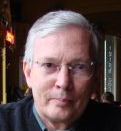
Artesano is a specialty coffee roaster located on rue Saint-Paul just off of quai des Célestins in the 4th arrondissement. I went there recently to taste espresso and to purchase a supply of roasted coffee beans.

Coffee is served on the sidewalk terrace outfitted with patio furniture. I found a spot to sit and wait for my espresso to be prepared. When it was served, I sipped it slowly, trying to determine its flavor characteristics.
I found the brew to be strong and a bit harsh without much sweetness. The only note that I could detect was tomato, but perhaps I was influenced by the last time I had tasted an espresso.

The proprietor, Arturo Valentino, told me that he roasts his beans weekly at a coffee roasting facility in the 13th arrondissement. He sells only Mexican coffee.

I purchased a 250g bag of the beans used to brew the espresso that I was served on the terrace. Then I asked Arturo to indicate the tasting notes on the bag. He wrote the following: kiwi, grape, and dried fruits.
I did not experience any of these aromas when I tasted the espresso at the shop. When I took the beans home and brewed them myself, I continued to taste only faintly-sweet notes of tomato.
I did some research on the Internet and found that the Irlanda Estate produces beans of the Red Bourbon and Typica variety. There was no indication on the package as to which variety it contained.

As well as being a coffee roaster, Arturo is also a photographer and journalist. There is a display rack of his large photographic prints in the center of the shop, and his images adorn the walls of the shop.
Arturo publishes a newspaper called Artesano Journal. The copy that I was given (Number 23 – February 2025) is in English and contains interesting articles on three creative people, two of whom have made Paris their home. The issue features an architect from Venezuela; a photographer based in Lisbon; and a barista from The Netherlands. The barista recently won the Latte Art France Championship held in Lyon in January. Her award-winning performance at that championship can be viewed here: https://www.youtube.com/watch?v=MfN3tqa6MWs.
Artisano Specialty Coffee Roaster
3, rue Saint-Paul
75004 Paris





















































